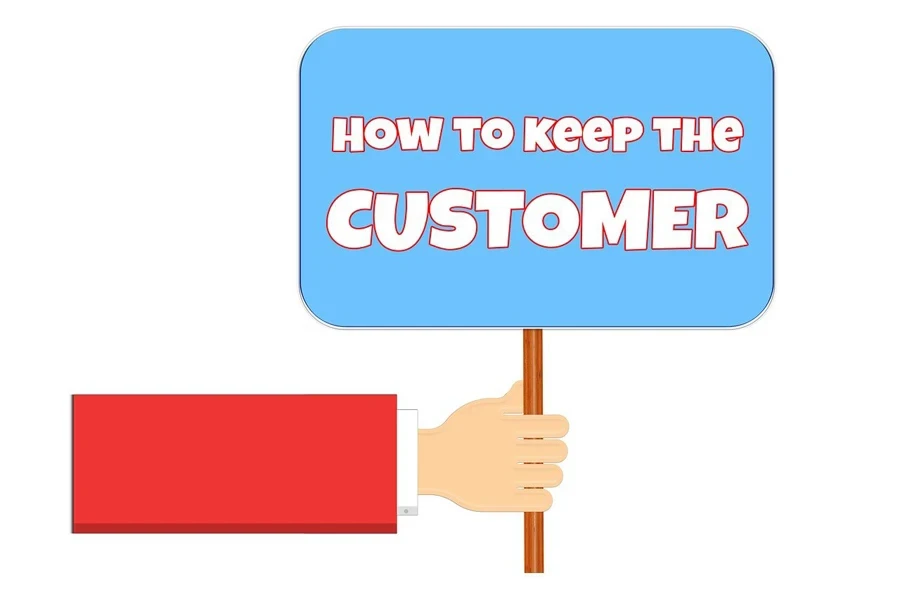In today’s competitive business world, retaining customers has become the lifeline for businesses to stay ahead of the competition in 2024. Attracting new customers is important, but keeping existing ones will significantly drive growth, profitability, and sustainability. Loyal customers have been proven to make repeat purchases and act as brand ambassadors.
Customer retention increases the inflow of business through word-of-mouth referrals and adds stability to business revenue. This guide will help you understand how to retain customers, become profitable, and grow a sustainable business.
Table of Contents
Customer retention: What it means
Why customer retention should be a top priority for your business
8 best strategies to improve customer retention
Final words
Customer retention: What it means
Customer Retention is the ability of a business to retain its customers over a specific period. It is more than just making a sale; it involves building a relationship that encourages repeat business and nurtures loyalty. Knowing your customer retention rate will help determine how well you retain customers in your industry and help you take an improved strategic approach for maximum customer retention.
Calculate your customer retention rate (CRR)
This simple calculation will give you a clear percentage that shows how well you retain customers. To calculate CRR:
- Decide the period for which you want to calculate the retention rate(It could be monthly, quarterly, or annually)
- Determine the number of customers at the beginning of this period
- Determine the number of customers at the end of this period
- Determine the number of new customers acquired within this period
- Calculate the customer retention rate using this formula:
| Number of Customers at the end of period – New Customers acquired Number of Customers at the beginning of the period | × 100 |
For example, if your business started with 150 customers, ended with 200 customers, and acquired 80 new customers during a specified period, then your retention rate should be:
| 200 – 80 150 | × 100 = 80% |
A higher percentage indicates better customer retention.
Why customer retention should be a top priority for your business
Increased profitability

Customers who are loyal to a brand tend to spend more on the brand over time. According to Forbes, the customer value of a retained customer is more than that of a new customer.
Cost-effectiveness
Acquiring new customers has been reported to be 5-20 times more costly than retaining existing ones. This proves how investing in customer retention strategies can significantly reduce advertising and marketing costs.
Customer advocacy
Satisfied and loyal customers are more likely to recommend your business to others through word-of-mouth referrals. They can serve as indirect brand ambassadors of your brand which will help to attract new customers and increase business revenue.
Competitive edge
People tend to stick to brands they trust. Building and maintaining a long-term relationship with customers increases their trust and loyalty. This can help to consistently generate revenue streams and valuable feedback for continuous improvement, giving businesses an advantage over competitors.
8 best strategies to improve customer retention

Personalize the customer experience

Personalized recommendations make your customers feel that you are thinking about them and can help them decide on the best products to purchase, leading to higher customer satisfaction and loyalty.
Collect data from your customers to better understand them. This shows that you value each one as an individual. Use the data to send personalized suggestions, tailored promotions, and birthday greetings.
Offer incentives and run loyalty programs
Loyalty programs reward repeat customers, making them feel appreciated. Create a loyalty program that is easy for customers to understand and participate in. Reward them for purchases, referrals, and online engagements.
Create a reward program that categorizes customers into levels, increasing based on repeat purchases. Make the rewards worthwhile and attainable to encourage competition and repeat purchases. For example, introduce rewards such as exclusive access to new products or special events.
Create omnichannel customer support

A multichannel support system allows businesses to be available to customers across multiple platforms, including social media, phone, live chat, or email. When customers can easily reach businesses through their preferred channels, customer experience and satisfaction improve.
Invest in a customer service platform that merges various communication channels in a single interface for easy management and prompt response to customer inquiries. Also, ensure that branding and service quality are consistent across all channels. Make customers feel they are interacting with the same business no matter the platform.
Use emotional branding to communicate shared values
When you engage in social responsibilities like donations or youth programs, customers can identify with you and develop a stronger loyalty to your band. Customers support and connect more with brands that uphold similar values as them.
Engage in courses that resonate with your customers’ values. Use storytelling in your marketing efforts to help communicate your brand mission, values, and the benefits of your products in a way that customers easily understand.
Surprise customers with unexpected perks
Surprising customers can create memorable moments of delight that increase their emotional connection to your brand. Give your customers a new experience by occasionally offering unexpected discounts and freebies during purchases.
Use the under-promise and over-deliver method to wow your customers and keep them returning. Also, invite them to exclusive events to make them feel like they are a part of an exclusive community.
Use gamification to keep customers engaged
Human beings have a natural tendency to enjoy games and competition. Gamification involves applying game-like elements like point scoring to marketing techniques to make interactions with products or services more engaging and fun.
This can turn customer interactions into an adventure customers will be thrilled to embark on, encouraging repeat purchases. Host challenges that spur customers to shop and engage with your brand. Collect and store points that would guarantee discounts on future purchases.
Collect feedback and act on it
While positive feedback is good, negative feedback helps you, as a small business, improve and fix loopholes in customer service delivery. Conduct polls and surveys on your products and services to better understand your customers.
Examine the comments to find recurring problems and opportunities for improvement. Ensure you use them to make changes, improve customer service, and keep your customers interested in doing business with you.
Build a community around your brand

When customers feel a sense of community around a brand, they are more likely to advocate for and be loyal to it. Create online forums and social media groups where you share exclusive content and encourage customers to share their experiences.
Share user-generated content of your products to create a sense of belonging and make customers feel like they are part of your brand.
Final words
The first interaction with your customer significantly affects their decision to return. Poor service delivery causes many businesses to lose first-time customers. Deliver value in your first interaction and consistently offer them the best experience during each interaction.
Customer retention is a long-term goal that requires consistent efforts, creativity, and a genuine commitment to customer satisfaction. Some of these methods will work better than others, depending on the type of business. The goal is to create a lasting impact with each customer interaction and build a long-term customer relationship that keeps them returning.




